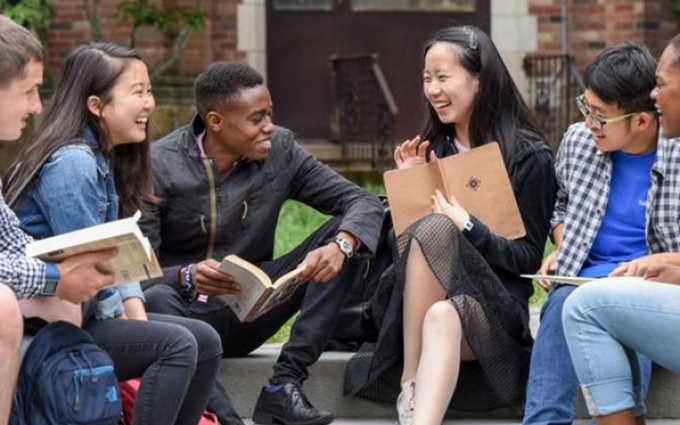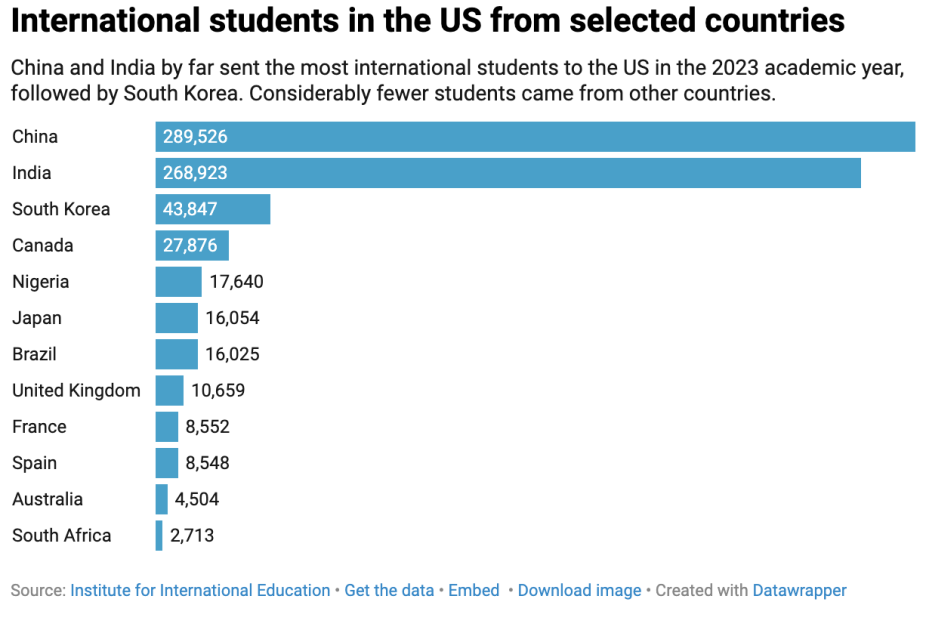
Of the millions of young adults heading off to college this fall, many will be international students. If trends continue, about 1 million students from around the world will come to the U.S. to pursue higher education this year.
These young scholars make a big economic impact. Altogether, they pump more than US$40 billion into the U.S. economy and support over 368,000 jobs. That’s not just paying professors and buying textbooks – it includes everything from renting apartments to late-night DoorDash and Grubhub deliveries. And it’s near a record high.
In fact, higher education is the 10th-leading export of the United States, according to the U.S. Bureau of Economic Analysis – except the export is really an import, of students from around the world.
Think of it this way: If you went to Paris to see the Olympics this year, the Olympics was the export that brought you – the tourist, or, in economic terms, the import – to France. In the complex world of economic balance of trade accounting, international students are the tourists visiting U.S. campuses.
Only economists could think that studying and taking exams is somehow a vacation.

While China, India and South Korea send the most students to the U.S., young people come from around the globe to pursue degrees here. Last year, they represented some 221 nations and territories, including three students from the independent island nation of Tuvalu.
A boon to local economies
In any of the 50 largest American cities, you’ll find at least one college or university with international students on campus. For these communities, global learners offer a most welcome financial aid package.
Consider Boston. With its pantheon of venerable institutions – including Boston University, where I teach multinational finance and trade – the region boasts over 50 colleges and universities. Boston’s economic gains from the more than 60,000 international students at these schools are huge: some $2.7 billion.
Or look at Greater Philadelphia. The region’s higher education institutions rank fifth nationwide in attracting students from around the world. From the perennially top-drawing University of Pennsylvania — itself ranked in the top 25 for international students — or the more specialized Curtis Institute of Music, together they can expect to host nearly 17,000 international students in fall 2024.
Prestigious private schools are a draw, but hands down the biggest pull for international students are state universities and colleges. Of the nation’s top schools enrolling these students last year, 32 were state colleges and universities, attracting over 240,000 students in total.
In the top three of those public institutions alone — Arizona State University, the University of Illinois Urbana-Champaign and the University of California, Berkeley — international students contributed nearly $1.6 billion, supporting close to 16,900 jobs. Expand that to the top 10 — the University of California system takes four of those spots — and the numbers pop up to $4.5 billion and 47,900 jobs.
Bringing the world to Mankato
But it’s not just the geographically sprawling University of California and other large state systems. Mankato, Minnesota, hosts a Minnesota State University campus; in the 2022 academic year, some 1,700 international students called this small city, 80 miles from Minneapolis, their home away from home.
Those students brought an infusion of $44.9 million into that community, supporting around 190 jobs. There are dozens of similar campuses in cities and towns like Mankato across the country. It adds up quickly.
In addition to private and public universities, community colleges also attract thousands of international students. Although their international enrollment has fallen off in recent years, community colleges still attracted just shy of 53,600 international students in 2023, with China, Vietnam and Japan leading the list.
Generating some $1.5 billion and supporting 6,620 jobs, they have a major economic impact – particularly in Texas, California and Florida, where the majority of these students come to learn.
One thing’s for sure: Whether they’re attending small-town community colleges or Ivies in big cities, international students have a “high degree” of economic impact.
Author Bio: Barnet Sherman is Professor, Multinational Finance and Trade at Boston University
